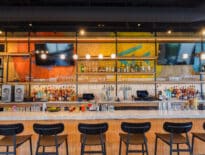Boston’s lab and life science market has been on the receiving end of cooling fundamentals and a challenging macroeconomic environment. There have been a significant number of new deliveries, along with a general increase in vacancy rates due to rising interest rates/increased cost of capital, and the following drop in funding, especially from venture capital firms. There is also a significant amount of product delivering throughout 2024 and into 2025, which will further constrain fundamentals in the short term.
However, our research indicates it is important to contextualize this information. If we can appreciate that the biotech real estate market received an unprecedented boom in demand, which accelerated even further as a function of the extremely cheap funding environment, we can fairly assume that this uptick in vacancy rates is a normal part of the real estate cycle. It will cause short-term challenges, but we expect it to normalize over the coming years.
The biotech atmosphere at its very core functions as a speculative industry. They rely on a multitude of funding sources: federal grants (NIH, SBIR, STTR) and venture capital funding, as well as partnerships with larger firms.
As we have seen during the zero interest rate phenomenon era, or “ZIRP,” when the cost of capital was extremely cheap, funding skyrocketed, propelling new ideas, innovations and companies to the forefront. As a byproduct of that funding, the demand for life science space where these companies operate accelerated.
An already supply-constrained market with low vacancy rates bore the brunt of this demand increase: asking rents shot up, vacancies remained nonexistent, and developers pursued speculative projects in tertiary markets, hoping to benefit from an overflow of users priced out of, or simply unable to find space in primary markets.
Notable Deliveries and Supply
With an eye to the future, there are several key projects delivering this year.
The Seaport Science Center at 601 Congress St. is BioMed Realty’s leading project in Boston Seaport District, and has spec suites set to deliver in the first quarter of 2024.
Greystar Real Estate Partners’ 465,000-square-foot 74 Middlesex lab and office facility in Somerville is also planned to deliver in the first or second quarter of 2024.
BioMed Realty’s Assembly Innovation Park – Phase 1 is set to deliver a 495,000-square-foot lab and office project in the summer of 2024, also along Middlesex Avenue in Somerville.
These projects are actively seeking leasing commitments.
A fully committed project underway in Cambridge is the Ragon Institute’s new BSL-3 lab facility – 323,000 square feet at 600 Main St. in the heart of Kendall Square.
All told, we are tracking north of 14 million square feet set to deliver between 2024 and 2026, representing an inventory expansion greater than 20 percent.
Occupiers’ Many Advantages
Looking into 2024, there is space in this innovative industry for new competitors to take advantage of.
One of the key demand drivers for this marketplace, historically speaking, has been proximity. Tenants place extreme value on the concept of being near other innovative, brilliant companies, especially concentrated in primary markets. Due to limited space availability and pricing constraints smaller tenants were forced into tertiary markets.
With this current dynamic shift, these smaller users are now able to participate in the core ecosystem. Additionally, a significant number of these companies’ funds were being diverted to pay astronomical costs for real estate – even in secondary markets. This, in turn, eats into their research and development and their talent acquisition budget.
The changing rental dynamics will free up additional funds for tenants to focus on their core lines of business, in theory driving innovation forward as well as adding jobs (a function of more money to devote to payroll) and help the industry advance.

Mark Fallon
In every crisis, there lies opportunity. As the life science innovation capital of the world, these types of opportunities rarely present themselves for smaller entrants into the market, and many have been waiting for this tight arena to open.
The challenging funding environment presents issues – but companies that can operate and succeed here are poised to promote not only themselves, but the community they seek to help. The commonwealth, in particular, is well suited for these challenges, as we have a unique ecosystem in our education and healthcare sectors that support our core innovation industry – a feature that most other real estate markets lack.
The biotech/life science, green tech and energy tech sectors in our innovation economy are not only our city’s future, but the world’s future as well. Demand for the services and products they provide will only increase as they work on solutions to the myriad of health and energy challenges that our future contends with.
Mark Fallon is director of research and strategy at brokerage Hunneman.






